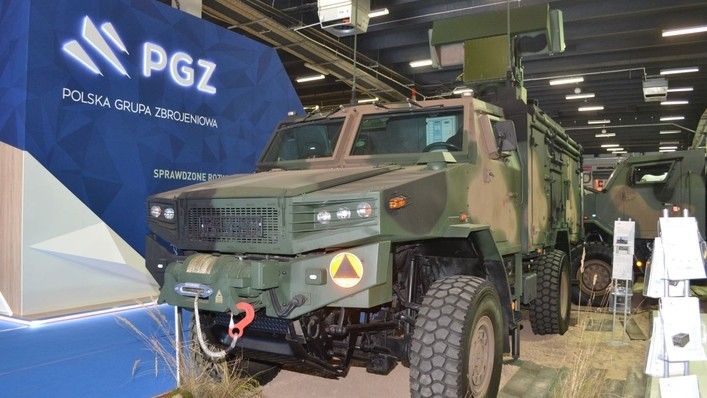Industry
Polish Radars Back in the Game. Polish Armed Forces Order AESA Radars

The Armament Inspectorate has published an invitation for the potential contractors to participate in a procurement procedure concerning 19 “Bystra” mobile short range radars. If the procurement is successful, this would mark the second serious contract concerning the Polish radars, concluded during the second half of 2018. Back in September the MoD placed an order with the PIT-RADWAR company, with regards to 11 TRS-15 “Odra” medium range radars. The aforesaid deal has a value exceeding PLN 0.5 billion.
The announcement made by the Armament Inspectorate of the Polish MoD suggests that the new procurement procedure would exclude the prior “technical dialogue”. It is going to be carried out in line with the guidelines applied in case of procuring the equipment that have a fundamental meaning for the national security. This translates into limited competition (Public Procurement Law Act) which, in turn, is compliant with Article 346 of the Treaty on the Functioning of the European Union.
The procedure is going to, formally, include stages as follows: invitation announcement, submission of requests by the potential participants, assessment of the requests and indication of the contractors, invitation sent out to the contractors to place their offers, negotiation of the offers, invitation sent to the contractors to place offers including the price, assessment of the placed offers and finally, finalization of the procurement.
However, the Armament Inspectorate wants to acquire, specifically, 19 “Bystra” deployable radars, manufactured by a single company - PGZ’s PIT-RADWAR - that is probably going to take part in the procedure. Formally, entities controlled by the Treasury and listed as ones that bear significant meaning for economy and defence may be involved in the process. Actually the order concerns 16 “Bystra” radars and four logistics and training packages, within the framework of so called essential delivery. However, optional procurement of another three radars and one package is also considered.
The contract is to be implemented in three stages. The first stage is going to concern the technical documentation of the product and a project of series manufacturing technical documentation that would take the changes defined by the Ordering Party into account (including hardware and software modifications); Then one product is going to be manufactured on the basis of the series manufacturing documentation, along with a single logistics-training package. After that, the process would involve commissioning of the system on the basis of the documentation. Then the documentation would be amended, with the recommendations made during the commissioning taken into account. And then, effort would be made to ensure full compliance of the product with the series manufacturing documentation. Finally, the contractor would carry out the relevant training for the users and deliver the Product.
During the second stage the contractor would manufacture and deliver 15 “Bystra” radar packages and four logistics/training packages compliant with the documentation, and then the manufacturer would be obliged to organize training for the radar crews. The third phase would concern delivery of another three radars and one extra package. Submission of the requests may be made until 17th October 2018, while performance of the agreement is to be finalized until 31st October 2022.
If the contract is signed, the military would receive 19 “Bystra” 3D radars based on the Żubr-P light wheeled platforms. The radar’s appearance is similar to the mobile “Soła” systems that had been delivered previously. “Soła” radars can be coupled with the “Poprad” VSHORAD SAM system.
In reality though, Bystra is an entirely new solution offering much better capabilities. It is the first series manufactured Polish AESA radar, with the antenna array consisting of numerous identical semi-conductor-based liquid-cooled T/R modules.
Thanks to the above, the radar in question is classified as a multi-functional solution capable of tracking typical airborne threats, such as combat aircraft and helicopters (including hovering helicopters), UAVs and missiles or mortar rounds. Procurement of the Bystra radars has now been an element of the Technical Modernization Plan for a long time. A few months ago the MoD announced that relevant agreement concerning these systems was to be signed by the end of this year.
Such radars can be used, for instance, as a guidance system for short range SAM systems, such as the CAMM system offered by MBDA. Last year the industry proposed that “Bystra” is used as a gap filler in the Narew air defence programme, so that the new generation SHORAD systems would be ready before the new Sajna radars are delivered.
The “Bystra” radar is operated in the C-band and has an instrumental range of 80 kilometers. It covers elevation up to the angle of 70 degrees and refreshes the image every 2 seconds.
